#aboriginal legends
Text
Our 78 year old Italian neighbour Josie might not remember my name, and may never get my pronouns right, but the thing is: We Are Besties and I am totally obsessed with her. She blasts disco music 24 hours a day. She chain smokes. She is so obsessed with Vegemite that she cut a holiday visiting family back home short because she was seized by Cravings. She took her first ever selfie with me. She flirts with my fiancé. Once I had to rescue her from her finding a lizard in her toaster. She drinks her first coffee of the day at like 4 am. Recently she told me “if anyone tries to take you away from me… I will kill them” with total seriousness and I fully reciprocate it. She is a constant source of chaos in our lives. I would do anything for her and I love her with all my heart
#josieposting#you don’t understand. she’s the best person on earth#she glares and smokes out the front while wearing all black and heavy eyeliner. my friends have asked if we live next door to a witch#she got fired from the arnotts factory in 1960 something because she stood up for an Aboriginal coworker… BEFORE SHE SPOKE ENGLISH#she put up string lights in her house because she liked that WE had them in OUR house#we are going to buy her a record player for her birthday#she is so obsessed with how Charlie does the ironing. she’s not really across how queers work. she’s like wow… he’s helping you…#she was wearing miniskirts out dancing until age 50 like. wow… legend…#she also voted yes in the referendum. constantly unexpectedly progressive woman#she recently asked a new neighbour what his religion was because she didn’t want to say ‘god bless you’ unless it was appropriate 🥲🥲🥲#COBURG BABY!!!!
80 notes
·
View notes
Text
Okay so I got curious about the Yowie Yahoo from Scooby-Doo Legend of the Vampire, cause I saw a reference to a Yowie in an article on Australian folklore. And it turns out the two entities are only the same in name and location!!
This is part of the wikipedia article for the Yowie

This is the Yowie Yahoo in Scooby-Doo Legend of the Vampire

As you can see, they took the name of a creature from Aboriginal myth, and said no, we're gonna do a vampire. Even the Yahoo part of Yowie Yahoo is another name for this same creature apparently!! (As well as a term for the bigfoot in the US in some areas)
This is especially strange to me, cause the literal Next Film in the DTV franchise is Monster of Mexico, which took the chupacabra, a creature often described as being like a lizard or dog and Drinking Blood (a known vampire trait) and turned it into

A bigfoot like creature!! They flipped em!!
#scooby doo#scooby doo legend of the vampire#i am not an expert in cryptozoology nor in Aboriginal myths so if someone else is please feel free to correct me!!#yowie#m post
53 notes
·
View notes
Text

Australian Aboriginal Good Luck Legend of Murrawar Coloured Sand Framed Art || SWtradepost - ebay
Genuine Sunshine Coast Coloured Sand - Rainbow Beach, Sunshine Coast, Queensland Australia
Aboriginal GOOD LUCK Legend
According to Aboriginal Dreamtime the legend Story:- A beautiful black maiden named Murrawar lived on the banks of Noosa River and fell in love with the Rainbow who visited every evening. Burwilla, a bad man from a distant tribe, stole Murrawar for his slave wife. One day Murrawar ran away along the beach and Burwilla followed her with his terrible killing Boomerang. She called for help and her faithful Rainbow raced across the sea to her. The wicked Boomerang attacked the brave Rainbow and they met with a roar like thunder. The Boomerang was killed instantly while the Rainbow was shattered into tiny pieces and lay on the beach to die. It is still there, it's colours forming the hills along Rainbow beach. Aboriginal women of many tribes made long treks to obtain and carry of to place in their hair these sands in the belief that the brave Rainbow was their protector or good luck charm always.
#australian aboriginal sand art#sand art wall hanging#framed art#aboriginal good luck legend#aoboriginal dreamtime legend#home decor#ebay wall art#swtradepost#good luck legend of murrawar
2 notes
·
View notes
Text

I wanted to draw irida being a little silly goose for fun ^_^
(likes and rbs are okay!)
#Silly lass!! a little goober even!#it’s self-care to make your faves silly and crazay!!!!!!!!!!! >_<#bambs makes some colours!#pkmn#pokemon#pla#irida#clan leader irida#pearl clan#pokemon legends arceus#pokemon legends irida#indigenous artist#aboriginal artist#ibis paint x#ipad artist#autistic artist#eyestrain tw
20 notes
·
View notes
Text

Native Legends was David Unaipon’s first book. Unaipon was a well-known Indigenous Australian of the Ngarrindjeri people, a preacher, inventor and the first Indigenous Australian writer to be published. Unaipon’s contribution to Australian society helped to break many Indigenous Australian stereotypes. Unaipon is depicted on the fifty dollar note.
7 notes
·
View notes
Photo
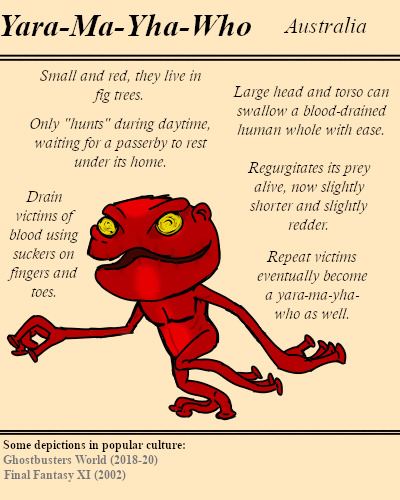
A strange diurnal creature, draining blood before swallowing its prey whole. It at least releases you alive, but try not to get caught more than once.
#BriefBestiary#bestiary#fantasy#mythical creatures#mythology#folklore#bloodthirsty#legend#australia#vampiric#australian aboriginal folklore#fig tree#monster#myth#aboriginal mythology#yara-ma-yha-who#yaramayhawho#aboriginal folklore#digital art#australian mythology#australian folklore#australian legend
29 notes
·
View notes
Text

Urban Nomad. The Life of Neil the Smith Author
Why ‘the Smith’? They were the creators, the crafters, the metal smiths, the makers of Medieval Britain a thousand years ago. Today, I’m ‘the wordsmith’. The author.
I’ve lived everywhere.. Over 50 places have been my home. An ancient aboriginal corroboree ground in a wilderness area known as Fairy Hills where the creek met the river was my first memory of life. And only a few kilometres from the Melbourne CBD. I’ve just learned they’ve been digging up ancient aboriginal artifacts that suggest this.
I’ve lived with psychics and healers. And sat with mediums or channels. I’ve lived with a Reiki Master in New York. With a Roman Catholic nurse in the north of Italy. With a Buddhist in the UK. My lawyer was an Atheist. I didn’t live with him.
Visit my 8 fun and entertaining autobiographical books on my Author Page here. You can find more of my adventures in my autobiographical books.
Namaste.
Neil the Smith (author)
PS. I recommend – ‘Our Thoughts Can Change The World’ (104 pages) and The Great Regency Cover-Up’ (236 pages). Buy both now and save on postage.
(TO BE CONTINUED)
#urban legends#author#life#creator#crafter#wordsmith#medieval#britain#ancient#aboriginal#artifacts#wilderness#melbourne#autobiography#book
2 notes
·
View notes
Text
K'gari is the largest sand island in the world, a great dune airing in the mouth of the Mary River. According to Butchulla legend, K'gari was a spirit who thought the earth was too beautiful to leave so she changed into this island.

"Killing for Country: A Family History" - David Marr
#book quotes#killing for country#david marr#nonfiction#k'gari#fraser island#qld#queensland#australia#sand#dune#mary river#butchulla#indigenous australians#aboriginal australian#legend
0 notes
Text
Some prevailing assumptions about our culture will be challenged and discussed in the First Knowledges series, such as that Aboriginal people were only hunters and gatherers, not farmers; that fire is destructive, not a tool for managing the land; that we did not build houses and had no technology, no knowledge system and no history, only myths and legends; that we had no scientists, doctors or lawyers; that we were incapable of innovation.
"Design: Building on Country" - Alison Page and Paul Memmott
#book quote#design#building on country#alison page#paul memmott#introduction#margo neale#challenging assumptions#first knowledges#indigenous australia#aboriginal australian#hunter gatherer#farmers#fire#backburn#land management#housing#technology#myths and legends#scientist#doctor#lawyer#innovation#nonfiction
1 note
·
View note
Text
i learned what are the most mysterious places in the world
Marree Man – The fact that there is not a single witness to the creation of the Marree Man speaks to the absolute isolation of central South Australia. Somehow in 1998, one person or a group of people were able to create a 2.6-mile long line drawing of an aboriginal hunter, without being seen. In the midst of barren, arid land in South Australia, the Marree Man is the largest geoglyph and work of art in the world. Cut into the harsh landscape with lines over 115 feet wide and one foot deep, the towering Marree Man is easily visible from space. Thirteen years after the Marree Man was discovered during a flyover, little is known about its origin. Although we may never know the true origin of the Marree Man, it is certainly one of most intriguing modern day mysteries.

Chocolate Hills – Bohol Island in the Philippines during the dry season, you might notice what looks like thousands of chocolate kisses protruding from the terrain. These mysterious conical mounds are known as the Chocolate Hills. There are approximately 1,268 individual hills, their heights ranging from 100 to 160 feet, though the highest is almost 400 feet high. The hills, which are almost all symmetrical, consist of grass-covered limestone and turn brown during the dry season. Despite the abundance of hills, it is unclear how they were formed. There are multiple geological explanations ranging from oceanic volcano activity to limestone weathering. Numerous legends and tales also exist to explain the Chocolate Hills.

Giants Nest – In 1949 a geologist named Vadim Kolpakov discovered a large mound of limestone in the north of the Irkutsk region in southeastern Siberia. The cone is curiously shaped with a crater at the top and a small mound in the center. The mound is about 40 meters high and 100 meters across at the base. The smaller mound at the top is about 12 meters high. The crater was named Patomskiy, after a nearby river, but local residents call it “the Fiery Eagle’s Nest”. Since the discovery of the crater, there have been many theories as to what could have created it. For a long time it was believed to be a meteorite impact structure. Some linked it to the Tunguska meteorite, whose remains have never been discovered. But the crater does not resemble any other known meteorite site. Even now, the origin of the crater is not discovered.
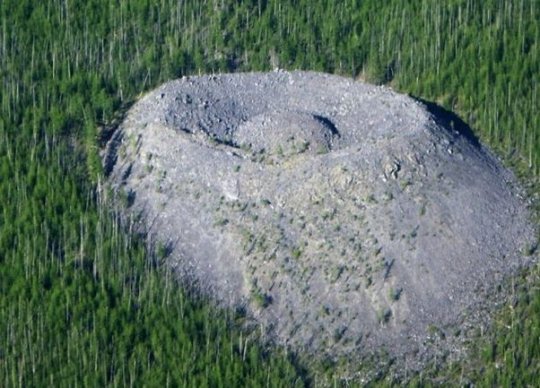
Richat Structure – In the midst of vast, vacant Sahara desert, just outside of Ouadane, Mauritania, lies a 30-mile wide geological oddity known the Richat Structure, sometimes called the “Eye of Africa.” From space, this natural curiosity forms a distinct and unmistakable bull’s-eye that once served as a geographical landmark for early astronauts as they passed over the Sahara. Once thought to be an impact crater due to its circularity, the unusual formation is now widely believed to have been caused by the erosion of a geological dome formed by pressure from a bulb of molten magma below.
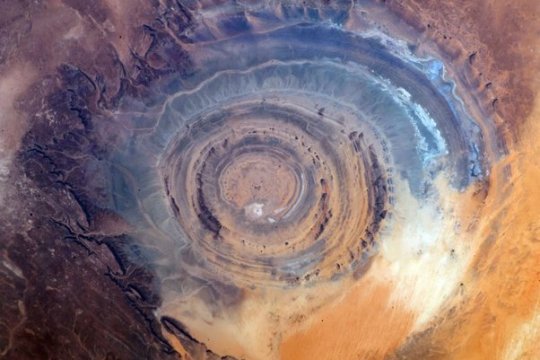
Plain of Jars – The Plain of Jars is a collection of large stone jars interspersed throughout the Xieng Khouang plain in the Lao Highlands. The stone structures are mostly made of sedimentary rock and, ranging from 3 to 10 feet in height, each can weigh up to 14 tons. To date, the origin of the jars is unknown, though archaeologists believe that they were originally used between 1,500 and 2,000 years ago. Many researchers have theorized that the jars may have once served as funerals urns or food storage. As local Laotian legend would have it, the jars were created by Khun Cheung, an ancient king of giants who lived in the highlands. It is said that Cheung, after fighting a long and victorious battle, created the jars in order to brew huge amounts of celebratory lao lao rice wine.
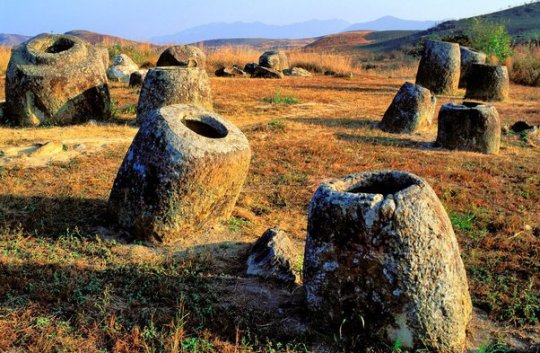
Giant’s Grave of Coddu Vecchiu – Giant’s or Tomba Dei giganti, are megalithic gallery graves that were used as public tombs during the Bronze Age. The massive gravestones were built by the Nuragic civilization, which existed in Sardinia from the 2nd millennium BCE. to the 2nd century CE. Despite the imaginative name, the sites were not the burial site of any giant; they were giant community burial chambers. Though we know the tombs had a funerary purpose, more questions remain. Little is known about the rituals or traditional beliefs that motivated their construction. Were they mass graves? Were they built to facilitate the journey into the afterlife? Since their existence has yet to be justified by scientific research, they have been credited to the supernatural, which has only increased their mystery. Legend also claims that yes, indeed, these were the tombs of powerful giants.
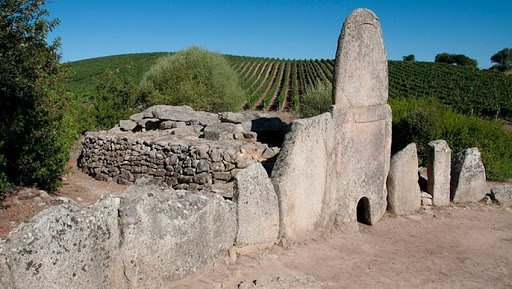
Zone of Silence – Pilot Francisco Sarabia was flying over a patch of desert land in Mexico when his instruments started to act increasingly odd. The man had to make an emergency landing in the middle of nowhere. Little did he know that this "nowhere" would be later dubbed "The Zone of Silence.” Weird radio silence isn't the only oddity of the creepy Zone. Like, what’s that weird trio that locals keep meeting in the Zone? They’re two men and a woman. Every time people see them, they’re wearing bizarre clothing that isn't suitable for a journey in the desert whatsoever. On top of all that, the Zone of Silence is known as a 50 km patch of deserted land where meteorites come crashing down on an eerily regular basis. On July 11, 1970, the US launched an ATHENA rocket from the Air Force base in Green River, Utah. The rocket was supposed to land somewhere in the area of White Sands in New Mexico. Instead, it went off course and, as if being pulled by some external force, crashed right in the heart of the Zone of Silence.
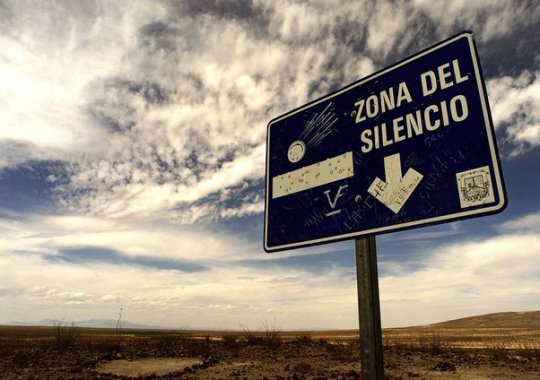
Michigan Triangle – Stretching from Ludington to Benton Harbor, Michigan and to Manitowoc, Wisconsin, the Lake Michigan Triangle has inspired numerous accounts of activity that are difficult to explain by rational thought. The mystery began in 1891, when a schooner named the Thomas Hume set off across the Lake to pick up lumber. Almost overnight in a torrent of wind, the Thomas Hume disappeared along with its crew of seven sailors. The wooden boat was never found. After the turn of the century, strange events happened at steady intervals. Of the more mysterious is the case of the Rosa Belle. In 1921 eleven people inside the ship, who were all members of the Benton Harbor House of David, disappeared and their ship was found overturned and floating in Lake Michigan. While it appeared that the ship had been damaged in a collision, no other ship had reported an accident and no other remains had been found.
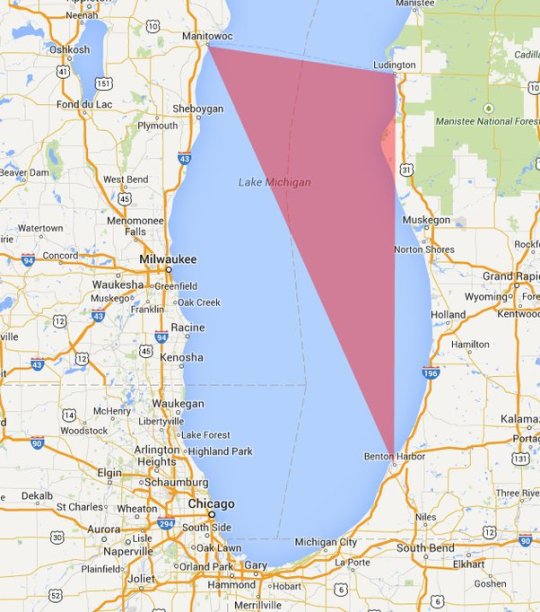
Alaska Triangle – The Alaska Triangle is a place in the untouched wilderness where mystery lingers and people go missing at a very high rate. The area began attracting public attention in October 1972, when a small, private plane carrying U.S. House Majority Leader Hale Boggs, Alaska Congressman Nick Begich seemingly vanished into thin air. For more than a month, 50 civilian planes and 40 military aircraft plus dozens of boats, covered a search area of 32,000 square miles, but no trace of the plane, the men, wreckage or debris were ever found. Afterward, more planes went down, hikers went missing, and Alaskan residents and tourists seemed to vanish into thin air. In fact, since 1988, more than 16,000 people have disappeared in the Alaska Triangle, with a missing person rate at more than twice the national average. These disappearances are blamed on everything from severe weather to aliens, to swirling energy vortexes, to an evil shape-shifting demon of Tlingit Indian lore called Kushtaka, with no scientific explanation to the disappearances till today.

The Initiation Well – The Initiation well is 88 feet deep well located on the land of Quinta da Regaleira. Actually, it was used for ceremonial purposes. There is another small well near this well. Both these wells are connected by tunnels. The larger well contains a 27-meter spiral staircase with several small landings and the smaller well contains straight stairs that connect a series of ring-shaped floors to one another. The smaller well is also called the 'Unfinished Well'. The depth of this larger well is equal to the four-storey building, which becomes narrower on going closer to the ground. It is believed that there is some kind of light comes out from the well inside the ground and comes outwards. Surprisingly, there is no system of light inside this well, then where from this light comes, it is the secret. Anyone who comes to visit here, always raises the question of where the light comes from inside the well? Till today this secret is unsolved.
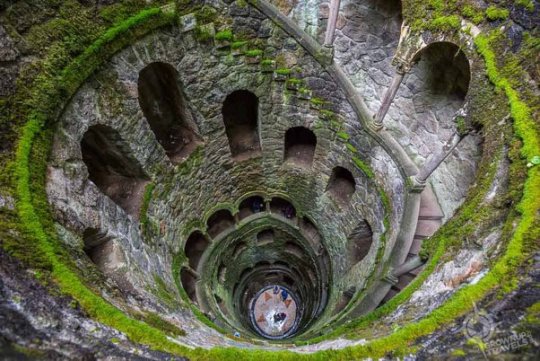
(Image Source : Google)
Thanks for Reading.
693 notes
·
View notes
Text
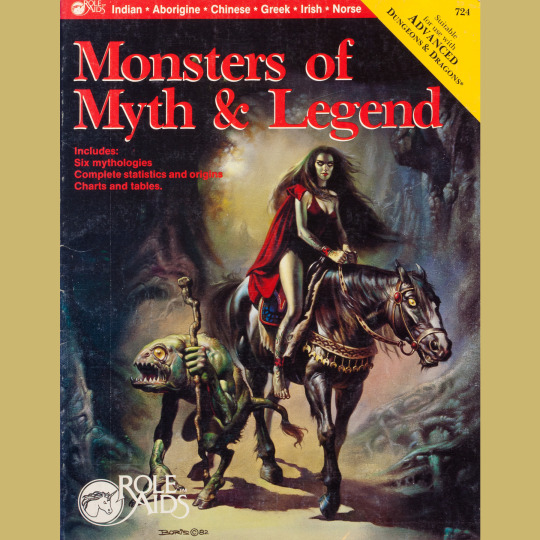
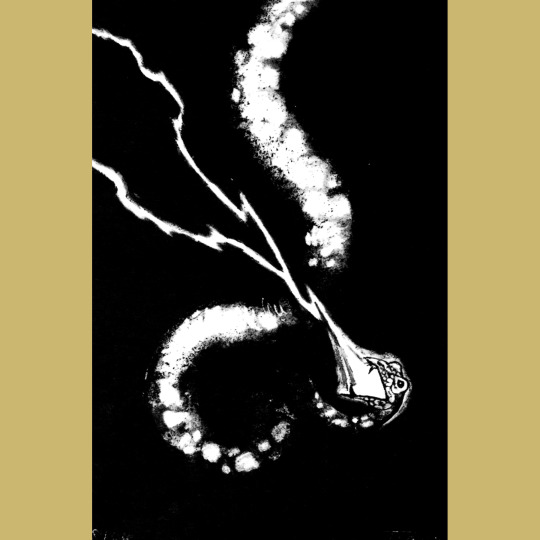
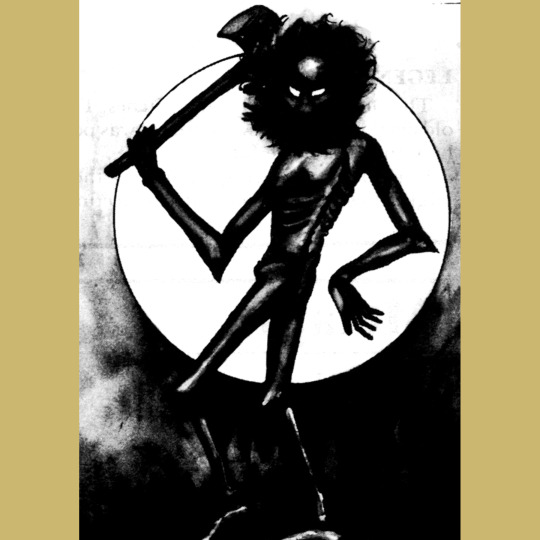


Love a monster book. This is Monsters of Myth & Legend (1984) for Mayfair’s Role Aids line of D&D sourcebooks. As the title tells you, this is a collection of monsters drawn from mythology. Four groupings of them are tied to specific cultures: Norse, Irish, Greek, Chinese. Two other draw broadly from the myths of people living in large regions but which belong to many distinct cultures: native American and Aboriginal Australians.
The mix is pretty solid. I particularly appreciate the monsters from Australia, which are often overlooked in this sort of thing — and even here, I can think of a couple more I would have liked to have seen, like the Pangkarlangu (neolithic cannibals), though it is nice to get attributes for Malingee (shadow spirits with burning eyes) and Murgah Muggulu (a kind of dream spider). Weird that there are still some deep cuts from Greece — maenads, mares of Thrace, even Scylla — who don’t have D&D attributes. The China chapter is probably the most robust, providing a variety of spirits and monsters that have multiple potential applications in the game. China also has a giant with no head, which is maybe the most delightful monster in the whole book.
This is maybe one of my favorite Boris Vallejo paintings that were recycled for Role Aids covers. It downplays physique and features a rad monster, both of which seem unusual for Boris. Its more atmospheric, too, a bit more in line with Frazetta, honestly. The interiors are by Teanna Byerts and Robin Wood. I don’t dislike them, but they do seem diminished by tight deadlines, if I had to guess.
#roleplaying game#tabletop rpg#dungeons & dragons#rpg#d&d#ttrpg#Mayfair#Role Aids#Monsters Of Myth And Legend
84 notes
·
View notes
Note
Recently there been a controversy with a game called Genshin Imapct with a region called Nathan's that is inspired by Pre Colombian Latin American civilizations, some Afrcian, Hispanic, and Aboriginal Australian cultures. And just recently they revealed their characters.

Mavuika and another character named Ororon.
Mavuika (sun glasses woman) is inspired by Mahuika a Maori fire goddes who is known to have a Moko on her chin




This is Ororon from Genshin

He inspired by Olorun an Orisha from Yoruba Tradition


This is also Olorun from Smite


Some are saying it's because of the censorship in China as stated in this post.
However there are two company's that have dark skin characters in their game and they arent being censored; Riot Games who created League of Legends and Valorant and Lilith Games who have created the AFK games and Dislyte (a game inspired by mythology gods and beings)
You can't scream anymore anti blackness and colorism than this!
The post you linked started off incredibly racist regardless of the context lmao. "Don't scream racism because you can't find a character with a skin colour like yours" then don't pull from YORUBA GODS, FROM NIGERIA! Like this isn't like Greek and Roman mythology, where we all fucking know who those people are thanks to the emphasis of these mythologies in a White Western-ran Classics field and in a white supremacist society that deems them worthy of a white connection. I could walk past 2000 white Americans and I can guarantee 1990 of them won't even know what an Orisha is 🙄
I'm sorry but I do not feel like sacrificing any more of my mental health reading further, that first bit pissed me off so bad ik I'm just gonna make myself angrier reading. Yeah it's textbook racism. This is a fictional world with magic and fairies and shit, so i get we're not worried about "geographic accuracy". But what would have been the issue with leaving them looking like the gods they were inspired by, if the island is supposed to be influenced by those real world religions? There wasn't enough skinny pale people in the game lmao?
This is also another one of those examples of how nonblack people of color really irritate me when it comes to solidarity. Because why are you caping so hard for whitewashing. 🙄
46 notes
·
View notes
Text
Yurlungr - Day 46
Race: Snake
Alignment: Neutral-Chaos
June 3rd, 2024
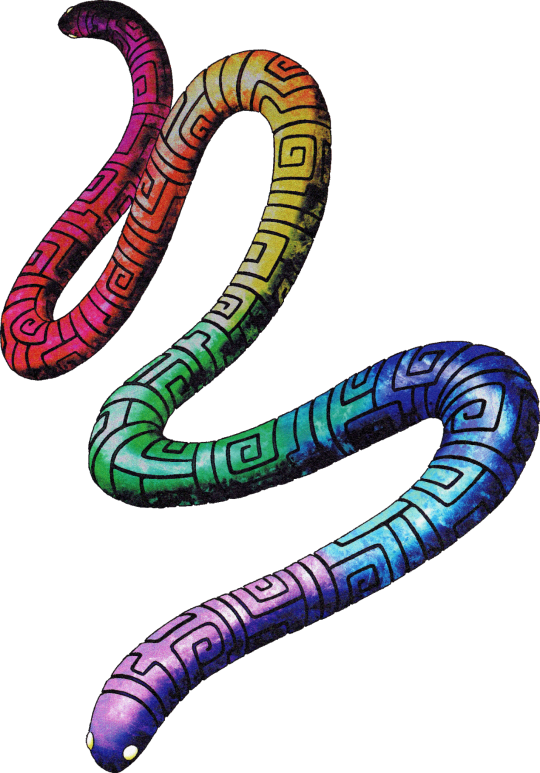
You know what the term Pride Month has if you squish it together a bit? Demon! Hell yeah, it's time to get into a serpent with all the colors of the rainbow to please our gay overlords. Please welcome the snake, the myth, one of the most famous deities in Australian mythology, and an absolute favorite demon of mine, Yurlungur! Originating from Aboriginal mythology, a criminally underrepresented mythos in several series (SMT included, unfortunately,) Yurlungur is the primary deity depicted in several breakout tales from this relatively unknown set of stories, a winding copper snake known for bringing rainfall and life in tow.
Yurlungur, better known as the Rainbow Serpent, is an incredibly important entity in Australian mythology, being an archetypical 'Mother Nature' of sorts. As its origin story goes, it was the creator of the land and sea, and could bring great prosperity- however, if one were to bother it, that prosperity would come crashing down, as it was a force of nature in more ways than one. Interestingly, Yurlungur is only one epithet of several given to the Rainbow Serpent, as several other cultures in Australia at the time gave it different names in spite of having it as one, overarching force. For instance, the Galpu clan called it 'Witij', while a similar deity typically purported to be the Rainbow Serpent in Queensland is named 'Kanmare.' Several more names make up this ranking, but given that Yurlungur is the most widespread epithet, given by the Murngin, I'll keep referring to it as that. Just keep in mind that, in further research, many sources may call it different things, so give your thanks to the fact that there were so many Aboriginal cultures out there.
According to anthropologists, the snake is heavily associated with the concept of 'The Dreaming,' an incredibly important bag of worms in Australian mythology- the idea of The Dreaming, or Dreamtime, is a romantic worldview of times before our own wherein great heroes and monsters resided, where supernatural threats were vanquished by not gods but mortal men who were simply revered as legends. During this time, it's believed, the Rainbow Serpent was most active- it gave blessings to humanity and curses to those who dared to break the law of nature, being the ultimate protector of mankind above all. Even past the time of Everywhen, however, the Serpent still lives on; a beautiful concept related to it, in my opinion, is the idea that each rainbow is simply a trail left behind in the sky as it flies from area to area.
The most prominent myth about the Serpent... isn't really one I wanna touch, frankly, given that it makes me a bit squeamish, but oh well. As the tale goes, a pair of sisters, the Wawalag sisters, to be exact, travel the land in search of civilization, as one is pregnant. Then, the one who was pregnant ends up giving birth, whereafter the blood from the agonizing process ends up trailing into the Rainbow Serpent's watering hole. Likely perturbed, the snake ends up following the scent of blood to the sisters now taking shelter in a hut, invades in the dead of night, and eats them and the newborn they were now carrying. Satisfied with its revenge, it tries to head back home... and then is bitten by an ant, the act of which makes it throw up.
This action makes the regurgitated bodies of the three turn into Arnhem Land, a term for the northern section of Australia, wherein the Serpent speaks and tries to make right for its action by helping the people who move there. Yeah. I don't know either. I think this story is meant to be a metaphor for the creation of a family, but...??? Yeah, I don't know. Sue me. That (frankly bizarre) story aside, though, the Rainbow Serpent actually does stand as a favorite in terms of Mythology for me, and it's all down to the fact that it's so unique- and almost cute.
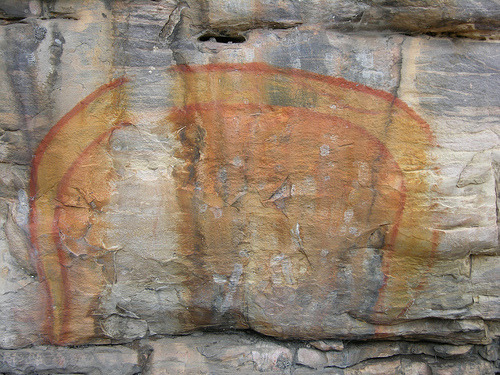
Nature deities are no small part of any tapestry or pantheon, but something about Yurlungur just tickles me. It may be its role as an embodiment of the rainbow itself, it may be just down to my love of snakes and rainbows, it may even just be down to the fact that Aboriginal folklore is underrepresented in so many faucets, but the Rainbow Serpent is a favorite deity of mine even in the star-studded halls of gods. It has a unique purpose as a creator god, a mother god, a nature god, the lord of the rain and weather, and being a snake, all the while having a cool sheen and an interesting look. I love Yurlungur to bits. All of that aside, though, how is it represented in SMT?
I love it. Full stop. Thanks for readi- no, no, I'm joking, but this design is easily in my top 10. Not only is it rainbow, not only is it adorable, but it's accurate and unique! It brings something entirely new to the table while still being a fantastic representation of the Rainbow Serpent itself, as the etching and patterns on it give it a vibe that makes it feel uniquely spiritual, in a way. It also makes the snake stand out among its peers. This is how you do a god-snake design, Quetzalcoatl! It's a perfect rainbow to start off Pride Month, and I hope you all enjoy this demon as much as I do.
Overall, while the mythology surrounding Yurlungur is a bit... strange? It has a beautiful design, represents an incredibly romantic ideal, and is definitely deserving of being the demon of the day.
36 notes
·
View notes
Text
The Yara-ma-yha-who is a legendary creature found in Australian Aboriginal mythology. The legend is recounted by David Unaipon. According to legend, the creature resembles a little red frog-like man with a very big head, a large mouth with no teeth and suckers on the ends of its hands and feet.

Pic by tohdraws on deviantart
The Yara-ma-yha-who is said to live in fig trees. Instead of hunting for food, it is described as waiting for an unsuspecting traveller to rest under the tree. The creature then drops down and uses its suckers to drain the victim's blood. After that it swallows the person, drinks some water, and then takes a nap. When the Yara-ma-yha-who awakens, it regurgitates the victim, leaving them shorter than before. The victim's skin also has a reddish tint to it that it didn't have before. If this process is repeated, the victim becomes a Yara-ma-yha-who themselves.
According to legend, the Yara-ma-yha-who is only active during the day and only targets living prey. "Playing dead" until sunset (it is said to only hunt during the day) is offered as a ploy to avoid attack. Stories of this creature were reportedly told to misbehaving children.
31 notes
·
View notes
Text

Cryptid of the Day: Quinkin
Description: Aboriginal painting in Northern Queensland, Australia depict a giant named Turramulli, a hairy beast also known as a Quinkin. According to legend, the Quinkin slept in caves and roamed the night looking for kangaroos and humans to eat.
74 notes
·
View notes
Text
Crevan ESPANE (???) aep Caomhan Macha.
But what if... Iberian elves?
Neolithic populations of the British Isles reveal genetic threads leading to present day Northern Spain and Portugal. Of particular interest, in relation to the later Celtic culture (6th century BC) then would be the Celtiberians.
The oldest identified population of the Islands belonged to the same group as the Greek Pelasgians or the Italians Etruscans. Anglo-Saxon historians call this mysterious people Iberians, because they are believed to have come from the Iberian Peninsula. It is not known from where they came to the Iberian Peninsula, when they landed in the British Isles and whether they found and conquered any indigenous, ancient races there.3
The Iberians did not leave many traces of themselves in the Islands (if, of course, we do not count the Stonehenge and New Grange), which leads to the conclusion that they did not develop like the Etruscans, but remained at a rather primitive level of civilizational development until the arrival of the Gallic Celts (around 6th century BC), an ethnic group of particular interest to us.
Part of the indigenous primeval population of Britain (the alleged Iberians), survived, however, they did not integrate with the Gallic Celts and were not conquered. These were the tribes that inhabited the wild, inaccessible highlands and mountains in the north of the Island - Albany, which is today's Scotland. These northern tribes, as we will see later, defended themselves against foreign pressure very effectively and for a very long time.
- A. Sapkowski, The World of King Arthur
Truthfully, this is not meant as elves = Celts. Or that elves = Iberians. It is merely to repeat: elves are migrants. A wave of migrants shrouded in myth and dreams, who - by mixing history and legend - would have given Celts many of their deities, places of worship, and culture (possessing similar language, traditions, cultural mores/taboos, etc). Strange folk, who arrived one day in their white ships, only to - in time - forsake these shores just as suddenly; leaving behind an ubiquitous mark of their presence. If you were Irish, then you might have called them Tuatha Dé Danann - Tribe of gods, or, later, Children of the Goddess Danu. If Welsh, then Ellyllon, or Tylwyth Teg, the host of Annwn. If Scottish, then Aos Sí, Sidhe.
The British Islands, as we call them today, were exceptionally lucky in terms of the people living there. They have been visited over and over again since time immemorial. After defeating the indigenous population, the invader quickly became an "aboriginal" only to be defeated and conquered by someone else who became an "indigenous" again, and so on. Thanks to this, it is not known who was the "real native" there. I mean, it wouldn't be known if it weren't for myths and legends.
- A. Sapkowski, The World of King Arthur
Making Espane in Avallac'h's name a homage.
Everyone has the right to some roots. Even legends.
---
[3] "Quite recently, a Bulgarian philologist, on the basis of a study of the Hittite and Etruscan languages, proved that these languages derive from a common root. The Etruscans, the Bulgarian continues, are the people who came to Italy from Asia Minor. To be precise, it is none other than the Trojans of Homer and Virgil. And if the Etruscans and the British Iberians are related, the legend of Brutus, a descendant of Aeneas unexpectedly shows us its second bottom."(Sapkowski, A. The World of King Arthur)
Sapkowski is herein drawing the connection between the settlers of the British Isles and the exiles of Troy.
My second favourite theory comes from @lladmie
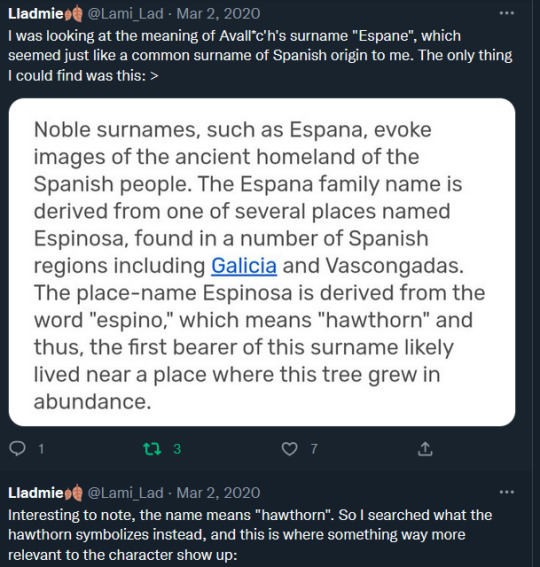
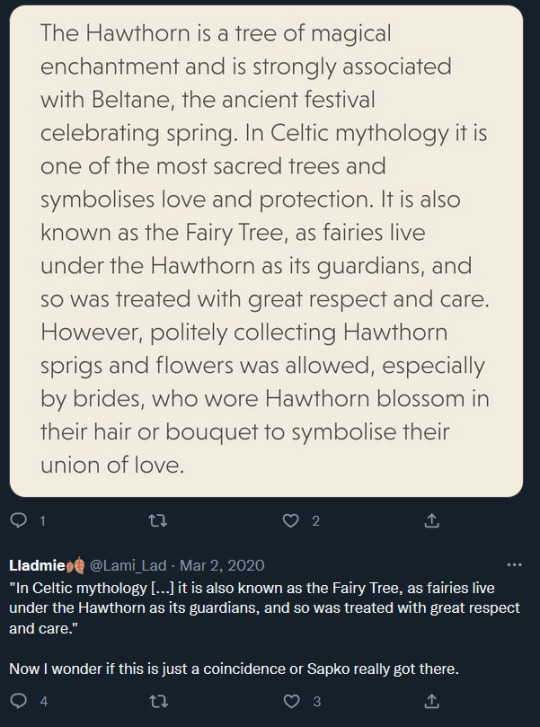
#avallac'h#aen elle#aen seidhe#the world of king arthur#celtic mythology#folklore#homespun etymologists unite!#the witcher#the witcher books#the witcher meta
24 notes
·
View notes